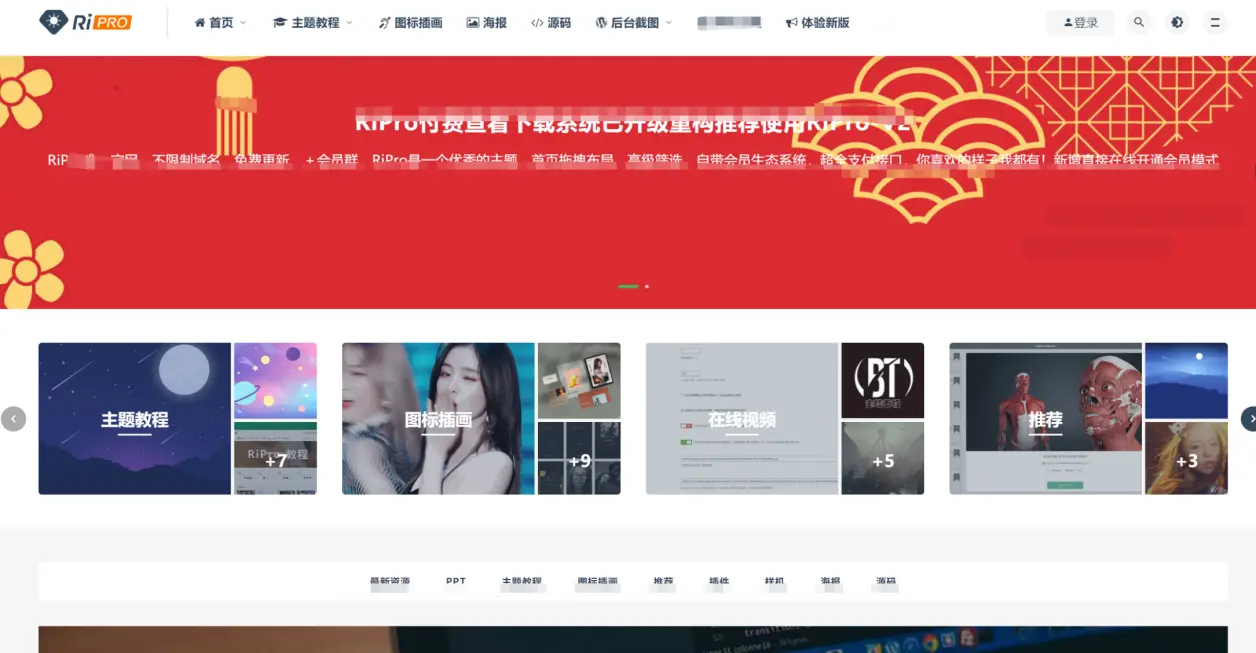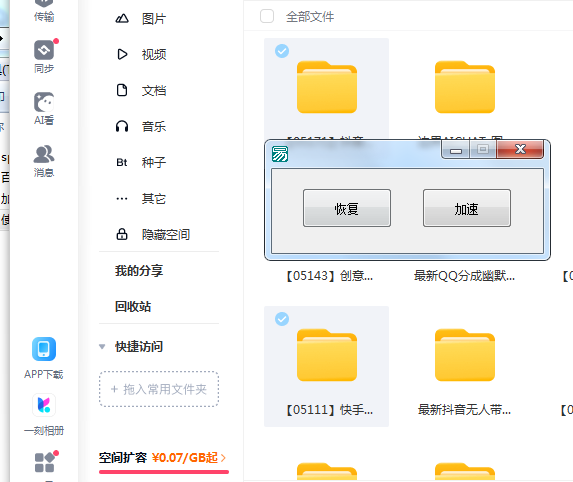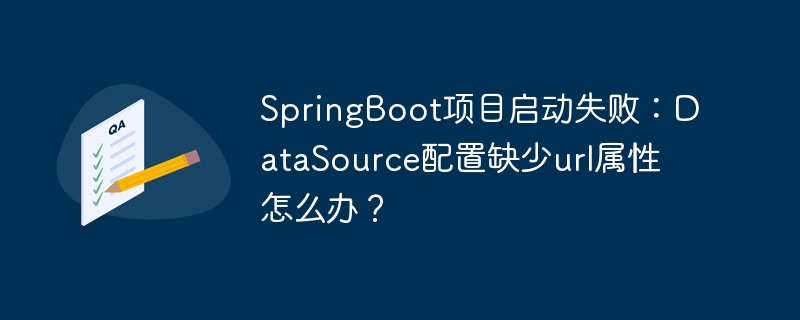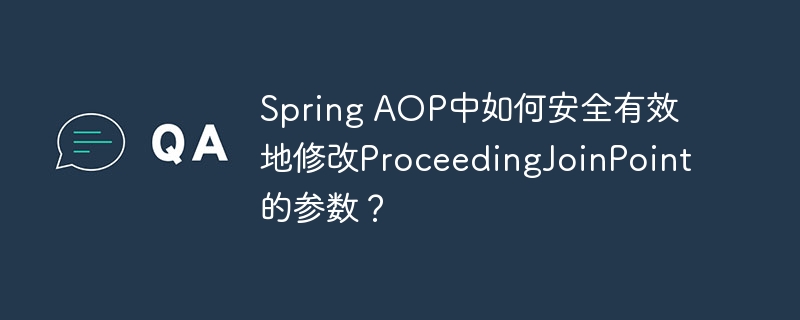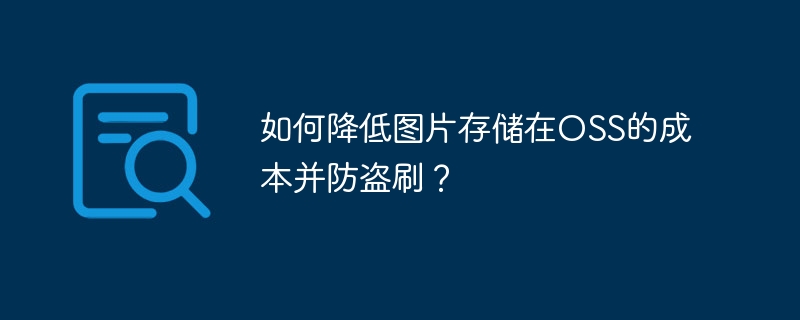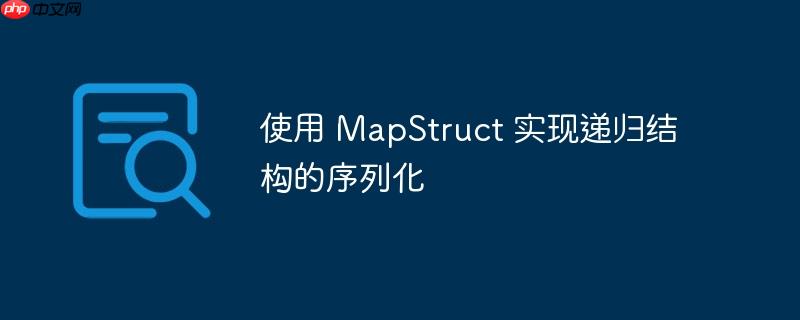
本文档介绍了如何使用 mapStruct 库来序列化具有递归结构的 Java 对象,例如树形结构。通过定义多个 Mapper 接口,并结合 @Mapping 注解,可以优雅地将包含嵌套列表的实体类转换为对应的响应类,从而简化 API 响应的构建过程。
递归结构序列化方案
在开发 Java Web 应用程序时,经常需要将内部数据模型转换为外部 API 响应格式。对于具有递归结构的数据模型,例如树形结构,手动编写序列化逻辑会变得非常繁琐。MapStruct 是一个代码生成器,可以简化不同类型之间的映射。本文将介绍如何使用 MapStruct 来序列化包含递归结构的 Java 对象。
实体类与响应类定义
首先,定义需要映射的实体类和对应的响应类。以树形结构为例,包含 Tree 和 Leaf 两个实体类,以及对应的 TreeResponse 和 LeafResponse 响应类。
import lombok.*; import lombok.experimental.FieldDefaults; import java.util.List; import static lombok.AccessLevel.PUBLIC; @Builder @Getter @AllArgsConstructor @FieldDefaults(level = PUBLIC) public class Tree { String name; List<Leaf> leafs; }
import lombok.*; import lombok.experimental.FieldDefaults; import java.util.List; import static lombok.AccessLevel.PUBLIC; @Builder @Getter @AllArgsConstructor @FieldDefaults(level = PUBLIC) public class Leaf { String name; List<Leaf> children; }
import lombok.*; import lombok.experimental.FieldDefaults; import java.util.List; import static lombok.AccessLevel.PUBLIC; @Getter @Setter @FieldDefaults(level = PUBLIC) public class TreeResponse { String name; List<LeafResponse> leafs; }
import lombok.*; import lombok.experimental.FieldDefaults; import java.util.List; import static lombok.AccessLevel.PUBLIC; @Getter @Setter @FieldDefaults(level = PUBLIC) public class LeafResponse { String name; List<LeafResponse> children; }
定义 MapStruct Mapper 接口
为了实现 Tree 到 TreeResponse 以及 Leaf 到 LeafResponse 的映射,需要定义两个 MapStruct Mapper 接口。关键在于,需要一个单独的 Mapper 接口来处理 Leaf 及其子节点的递归映射。
import org.mapstruct.Mapper; import org.mapstruct.Mapping; @Mapper public interface TreeMapper { @Mapping(target = "name", source = "entity.name") TreeResponse map(Tree entity); }
import org.mapstruct.Mapper; import java.util.List; @Mapper public interface LeafMapperSecond { LeafResponse map(Leaf entity); List<LeafResponse> map(List<Leaf> entity); }
需要注意的是,LeafMapperSecond 接口需要定义两个 map 方法,一个用于映射单个 Leaf 对象,另一个用于映射 Leaf 对象的列表。MapStruct 会自动处理列表的递归映射。
测试用例
为了验证映射是否正确,可以编写一个测试用例。该用例创建一个包含嵌套 Leaf 对象的 Tree 对象,然后使用 MapStruct 将其映射到 TreeResponse 对象,并验证映射结果。
import org.junit.jupiter.api.Test; import org.mapstruct.factory.Mappers; import java.util.ArrayList; import java.util.Arrays; import java.util.List; import static org.junit.jupiter.api.Assertions.assertEquals; import static org.junit.jupiter.api.Assertions.assertNotNull; public class MapstructTest { private TreeMapper treeMapper = Mappers.getMapper(TreeMapper.class); @Test public void test() { List<Leaf> leafs = new ArrayList<>(); leafs.add(Leaf.builder().name("Leaf 1").build()); leafs.add( Leaf.builder() .name("Leaf 2") .children( Arrays.asList( Leaf.builder() .name("Leaf Children 1") .children( Arrays.asList( Leaf.builder() .name("Leaf Children 1.1") .build(), Leaf.builder() .name("Leaf Children 1.2") .build())) .build(), Leaf.builder().name("Leaf Children 2").build())) .build()); Tree tree = Tree.builder().name("tree name").leafs(leafs).build(); TreeResponse treeResponse = treeMapper.map(tree); assertEquals(treeResponse.name, "tree name"); assertEquals(treeResponse.leafs.size(), 2); LeafResponse leafWithChildren = treeResponse.leafs.stream() .filter(l -> l.name.equals("Leaf 2")) .findFirst() .orElse(null); assertNotNull(leafWithChildren); assertEquals(leafWithChildren.getChildren().size(), 2); LeafResponse leafWithSubChildren = leafWithChildren.children.stream() .filter(l -> l.name.equals("Leaf Children 1")) .findFirst() .orElse(null); assertNotNull(leafWithSubChildren); assertEquals(leafWithChildren.getChildren().size(), 2); } }
注意事项
- 确保 MapStruct 的依赖已正确添加到项目中。
- 使用 @Mapper 注解标记 Mapper 接口,MapStruct 将自动生成实现类。
- 对于递归结构,需要定义单独的 Mapper 接口来处理嵌套对象的映射。
- MapStruct 会自动处理列表的映射,无需手动编写循环代码。
总结
通过使用 MapStruct,可以轻松地实现具有递归结构的 Java 对象的序列化。通过定义多个 Mapper 接口,并结合 @Mapping 注解,可以优雅地将包含嵌套列表的实体类转换为对应的响应类,从而简化 API 响应的构建过程。这种方法不仅减少了手动编写的代码量,还提高了代码的可读性和可维护性。






